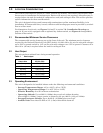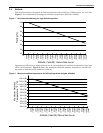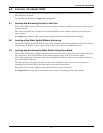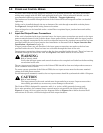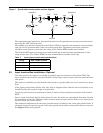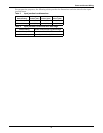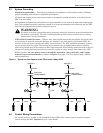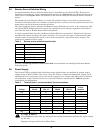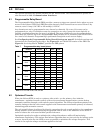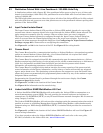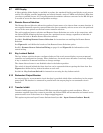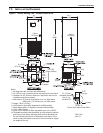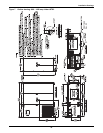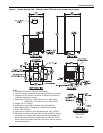
Options
14
6.0 OPTIONS
This section discusses the options available for the Liebert STS2. The communications options are
also discussed in 12.0 - Communication Interfaces.
6.1 Programmable Relay Board
The Programmable Relay Board (PRB) provides a means to trigger an external device when an event
occurs in the Liebert STS2. Each PRB has eight channels. Each channel has two sets of Form-C dry
contacts, rated 1 Amp @ 30 VDC or 250 mAmp @ 125VAC.
Any alarm/event can be programmed to any channel or channels. Up to ten (10) events can be
programmed to a relay. If multiple events are grouped to one relay, group the events logically to
simplify troubleshooting when an event is triggered. The same alarm/event can be programmed to
more than one channel. Up to two Programmable Relay Boards can be installed in the Liebert STS2
for a total of 16 channels. Programming is performed through the touch screen display.
See Configuring the Programmable Relay Board Settings on page 97 for default settings and
instructions for reconfiguring the relays. See Figures 21 and 22 for the location of the PRB. See
Figure 24 for wiring details. Table 7 provides the PRB pinout.
6.2 Optimized Transfer
When the Liebert STS2 is used as a primary-side switch—on the primary of an isolation
transformer—optimized transfer greatly reduces the transformer magnetization current during
automatic transfers through a new transfer control algorithm. The Liebert algorithm optimizes the
transfer timing so that the volt-seconds applied to the downstream transformer primary is balanced,
minimizing peak saturation current.
The volt-second balance is achieved by directly computing the volt-second applied to the transformer
during transfer events and determining the optimum time to turn on the alternate source SCRs in
order to balance the volt-second within specified tolerance.
Optimized transfer also seeks to minimize the voltage disturbances while still maintaining
transformer flux balance. This unique flux balance algorithm does not just wait for the balance point
to occur, but will pulse fire the SCRs as soon as possible to minimize the voltage disruption. This
results in far superior voltage waveforms applied to the load.
Table 7 Programmable relay board pinout
Channel Pin No. C N.C. N.O.
TB1
CH1
A1-3 1 2 3
B4-6 4 5 6
CH2
A7-9 7 8 9
B 10-12 10 11 12
CH3
A 13-15 13 14 15
TB2
B1-3 1 2 3
CH4
A4-6 4 5 6
B7-9 7 8 9
CH5
A 10-12 10 11 12
B 13-15 13 14 15
TB3
CH6
A1-3 1 2 3
B4-6 4 5 6
CH7
A7-9 7 8 9
B 10-12 10 11 12
CH8
A 13-15 13 14 15
TB4 B1-3 1 2 3
Key: N.O. = Normally Open; N/C. = Normally Closed; C = Common
Note: Pin 16 not used on TB1, TB2, and TB3.



